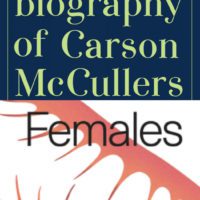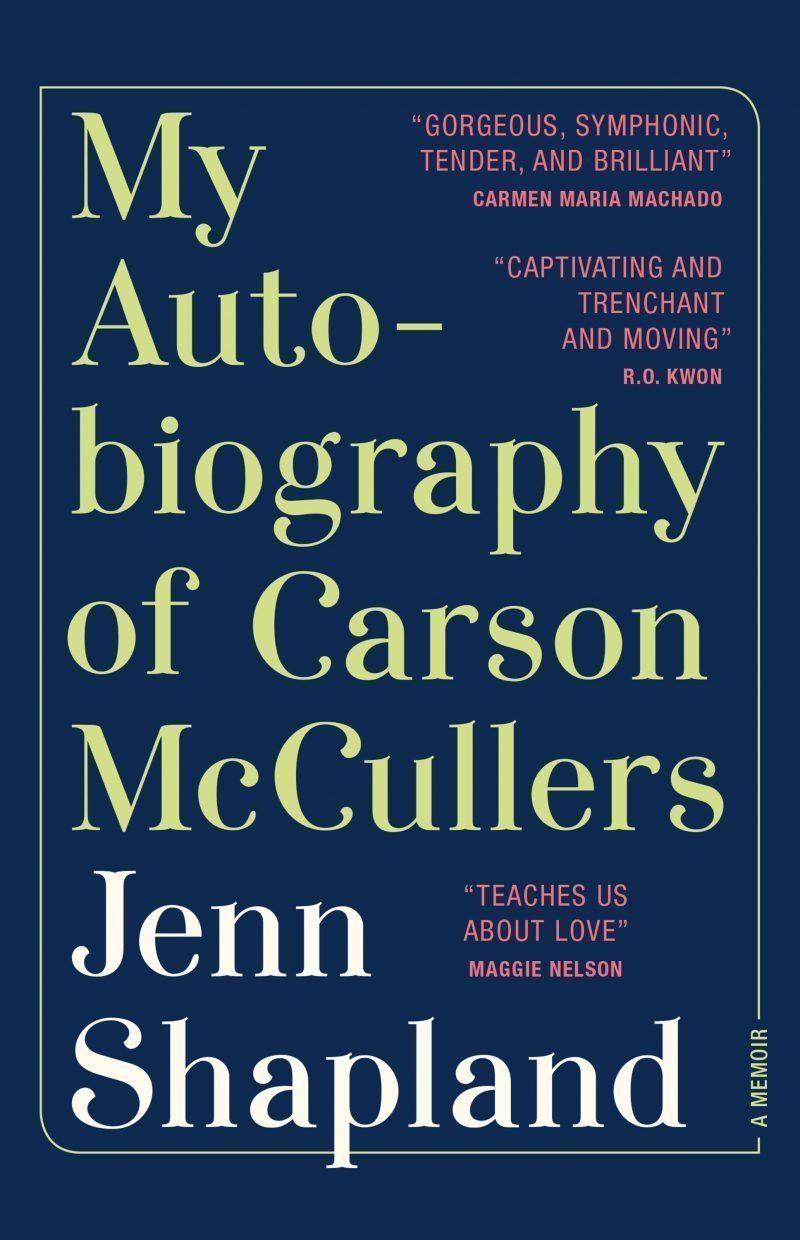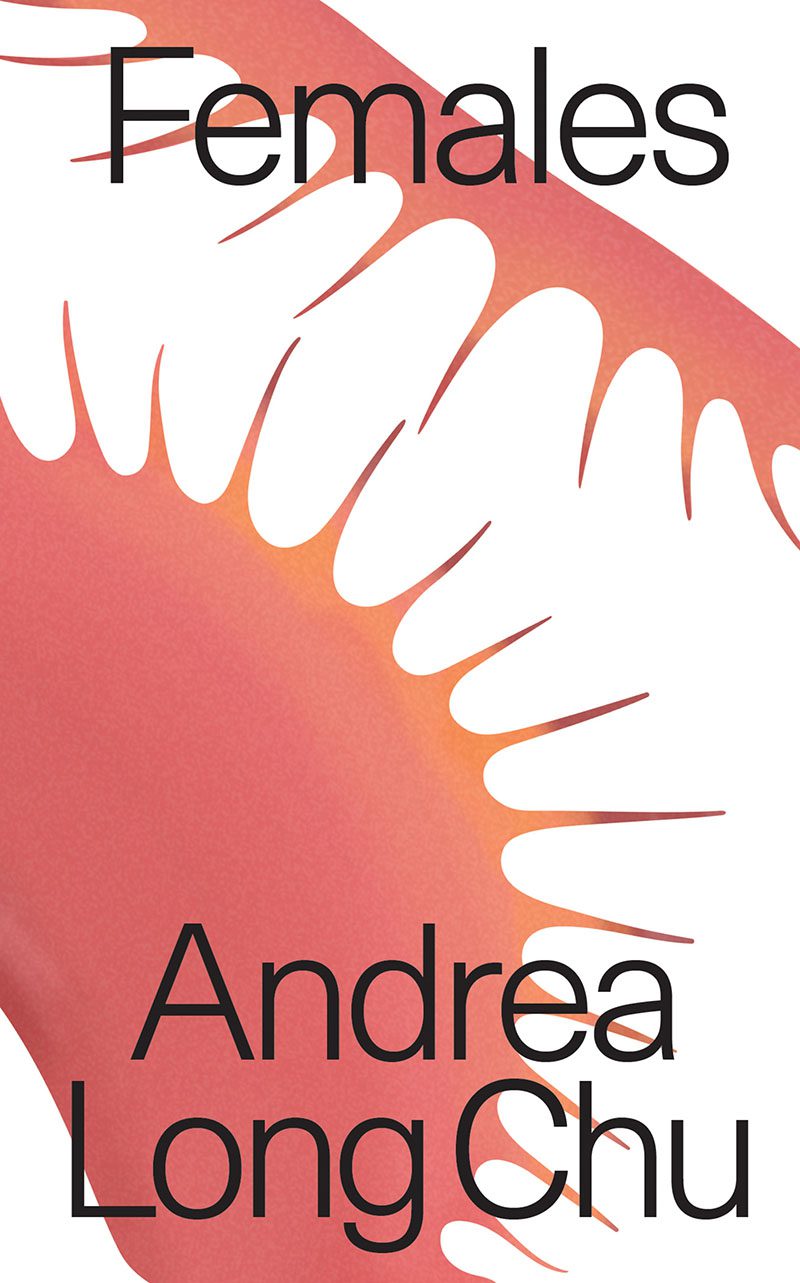In the tenth grade, emboldened by youth, I pinky-swore to the most popular girl in school that I was bisexual. I did it for the challenge, to see her uncomprehending look as she tried to reconcile that fact with my boyfriend of two years, the one with braces and peach fuzz who stood behind us in line for lunch, as she must have wondered whether this meant I had had any experience with women. (I hadn’t. But then again, who needs experience to know?) She didn’t ask for proof. Just my pinky, tangled around hers.
That’s me, in essence. Not, I’ve since learned, a bisexual, but a person who is ready to make bold claims and stand by them regardless of their veracity, just to shake people out of their daily assumptions.
“We share this, I think,” writes Andrea Long Chu in her new book Females. “A preference for indefensible claims, for following our ambivalence to the end, for screaming when we should talk and laughing when we should scream.” She’s not writing about me (as much as I would like to imagine it), but about Valerie Solanas, author of the mostly forgotten 1965 play Up Your Ass, which becomes the focus of Chu’s own stocky little book. Chu built up an internet following with frank essays about trans identity, and she brings the same hybrid of cultural criticism and personal experience to Females. She’s got her own indefensible claim at the heart of it all, written in big type on the back of the book: “Everyone is female, and everyone hates it.” A provocation. An invitation.
Writer Jenn Shapland shares this capacity to shout where others have too long been quiet, to care more for a written offense than a defense. Her first book, My Autobiography of Carson McCullers, recounts how she came to terms with her identity as a lesbian with a chronic illness, and charts her obsession with the long-dead writer who gives the book its title. While working as an archivist, Shapland discovers overlooked love letters between Carson (one is always on a first name basis with one’s obsession) and another woman, Annemarie. Those letters spark a search for proof that Carson, the 1940s and 50s writer most famous for her novel The Heart Is a Lonely Hunter and her troubled marriage to Reeves McCullers, was a lesbian. Which, somewhere along the way, transforms into a confrontation with all the historical reasons lesbians have passed through the centuries unnamed and glossed over. “Let’s call a lesbian a lesbian,” she writes. “Call yourself a lesbian if you’ve ever loved women. Loved another woman. Period. You loved your mother? Lesbian.” Shapland wants to catch us all in the word’s embrace.
If we are all female, as Chu declares, and we all have a mother, then by some queer logic, we are all lesbians. Right? That includes me, pinky-swearing before I fully knew myself, but also the girl I swore to, and the boy behind us, who loved me as much as a teenager could. (For the record, he went on to date another lesbian our senior year. We all gossiped about the inherent contradiction of claiming that label while dating a boy.) All of us lesbians. I love the steady logic of it all as much as I loved discovering algebra for the first time.
Chu’s argument that we are all female is “ontological, not biological,” and it goes something like this: Femaleness is the state of abdicating power in the realm of desire, both sexual and otherwise. While we’re all in this state of vulnerability together, and we all hate it, our gender identity is separate from this ontological state. “While all women are females, not all females are women.” Gender identity is all about how we handle our powerless state, and it’s directly connected to sexuality, though not our own. “Gender is basically a social expression of someone else’s sexuality,” she writes. It’s dressing up for someone else’s desire.
These definitions only open the door to more questions and cast doubt on the idea that everyone is a lesbian. Are lesbians, I wonder, the ones who acknowledge that they must be self-sacrificing, and at times celebrate it, who dress up only for themselves? Are we our own gender, a subset of women who want to attract other women, or are we any female who loves a female knowingly, so anyone could become a lesbian if only they would acknowledge that part of themselves? I long to ask Andrea, who spends little time defining the word in her book. I’m not complaining, though. In just ninety-four short pages, Chu manages to show off her quick wit and deep knowledge of everything from pop culture to social history to queer theory. She connects trans women to incels on Reddit through the red pill of The Matrix, unravels the etymology of the word female and the history of TERFs, the Trans Exclusionary Radical Feminists who deny that trans women are women and exclude them from women’s spaces, including the use of the word lesbian.
I turn back to Shapland in the hopes of finding a more explicit definition of the word. Where Chu is playful and at her best when writing about her own ideas, her prose never straining to hold up their weight, Shapland is meticulous and shines when she loses herself in her material. Her project of proof-finding defies the historical trend of demanding explicit records of sexual encounters to even acknowledge a woman’s queerness in favor of a stranger, more personal methodology: embodiment. In Carson’s letters to Annemarie, Shapland recognizes something of herself, of the years she spent living with a lover that she only called a roommate. Then, she tries to become Carson; she stays at Carson’s childhood home, soaking in her tub, cataloging her clothes, taking up residence at her beloved writers’ colony, Yaddo. She compiles a list of Carson’s potential girlfriends, a fuck-you the biographers and historians who wrote queerness out of Carson’s life, who denied it to Shapland’s face. “What is the precise evidence for love?” she asks. “Examples of daily intimacies?” In her search for these daily intimacies, she also creates them, little gestures of love for Carson.
The intimacy of Shapland’s close reading reminds me of the way Andrea writes of her own subject, Valerie Solanas, her “obsession with” Valerie, her “attraction to” her. The love between writer and dead subject becomes its own kind of queerness, too. Yet while reading, I often found myself wondering what Solanas was doing there at all. (I wanted to be alone with Andrea.) Solanas also wrote radically about gender, not just in Up Your Ass, but also in the SCUM Manifesto, which “effectively proposes misogyny against men.” When summarizing the work of her muse, Chu writes, “If you’re confused, good. So was Valerie, I think.”
I am confused. Not just about the SCUM Manifesto, but also about Females, confused from trying to follow the mesmerizing mental gymnastics of its argument, and from trying to discern the seriousness of it all. Does Chu truly believe that we’re all female, or is she laying out that argument as an experiment, to prove a larger point? And what might that larger point be? I look to Solanas for answers. “Valerie would make statements not because they were accurate or proveable,” Chu writes, “but simply because she wanted to.” Yet, at the same time, Solanas put her words into action by shooting Andy Warhol, perhaps beginning the extermination of men. (He didn’t die.) Solanas is celebrated for her “fierce commitment to her own ambivalence,” and perhaps Chu is emulating her here, as a form of flattery. Perhaps she is arguing that we are all female because we all know that we are not.
There is anxiety in the queer community about what the word “queer” means and how it can define without excluding. On one end of the spectrum, there’s Krista Burton’s 2016 New York Times humorous op-ed “Hipsters Broke My Gaydar,” which argues that hipsters appropriated the style signals of queer women—carabiners, flannel shirts, undercuts, those things that Andrea would call the expression of someone else’s sexuality—throwing a wrench in her ability to know who to hit on, and leading her to declare, “You’re all lesbians now, America.” I’m sucked into Burton’s nostalgia as I read, nodding at the familiarity of these signs as I lace up my Dr. Martens, proud to be wearing them for all the “right” reasons. And then there’s the kind of anxiety that leads to outrage, on full display in the comments section of Helen Betya Rubinstein’s 2017 Modern Love column “Is There Something Odd About Being Single?” Thirty-something and single, Rubenstein sets off on a road trip across the country where she texts with a new man she is seeing and declares that there’s something queer about being single. Where Burton met the broadening of queer culture with mild vexation, as if she had taken home someone else’s leftovers, Rubenstein’s piece was met with comments calling it “offensive” and “inappropriate.” I feel something that roils my belly, too, but I don’t know what to name it. Who am I to police the boundaries of identity, to ask for proof, for pinky swears?
Naming people as queer lifts us out of the silence that has long buried figures like Carson and her list of loves, allows us to find each other at the bar or the farmer’s market or on Tinder, to organize, to march. But if everyone is suddenly queer, doesn’t that ubiquity create its own kind of invisibility? Jenna Wortham captures this paradox perfectly in the headline of her own New York Times op-ed, laden with queer theory: “When Everyone Can be ‘Queer,’ Is Anyone?” Shapland and Chu respond with a certain playfulness, with the kind of assured binary logic required by such a question, not because it’s always true, but because it exposes the absurdity of the framework. The assertion that everyone who loved their mother is a lesbian is absurd, but no less so than the long-held belief that everyone is straight until proven otherwise, or the centuries-long project of elision that has removed us from the historical record. The assertion that everyone is female is no less unsettling than the cultural practice of assigning babies a gender at birth on the basis of their genitalia, or the Lean In-style feminism that asks us to become male and take for ourselves the kind of power they hold.
For me, being queer is a matter of perspective, a willingness to see the word and the people who occupy it in new ways, an orientation, in the most traditional sense of the word, as writer Sara Ahmed argues in her 2006 book Queer Phenomenology. Through my close reading, I try to become Jenn, to become Andrea, just as they tried to embody their subjects, to imagine their answers to the questions that were never asked. Desperate for every word, I read Andrea’s bio, and my eyes snag on the final line: “She lives in Brooklyn with her girlfriend and their cat.” That was once the final line of my own bio. The girlfriend is now gone, but I remain in Brooklyn, and the cat remains with me. (Am I still a lesbian when I’m alone?) “I am Jenn,” I whisper to the cat, even though I am privileged with my health. “I am Andrea,” I say to the empty apartment, even though I am cisgendered. I try on their identities, embrace the absurdity, feel out the places where we differ but mostly notice the places where we are the same.
The coincidence of the publication of these two deeply queer love letters to fellow artists just a few months apart, love letters that yearn to find meaning in identity, delights me. Taken separately, each book is groundbreaking in its defiance of genre and its irreverence for tradition. Together, they become a portent. Could they signal that the era in which markers of gender identity and sexuality are useful is coming to a close? Through their tricks and sleight of hand, these writers expose the futility of naming ourselves with the specificity of words like “female” and “lesbian,” words that groups like the TERFs have long tried to police. Instead, they direct us to confront the power structures that asked us to name ourselves in the first place, that asked for proof and pinky swears, to begin the work of dismantling them. This is the kind of pinky swear I could make. Not one that promises a specific identity, but one commits to a reexamination, and a re-imagination.






